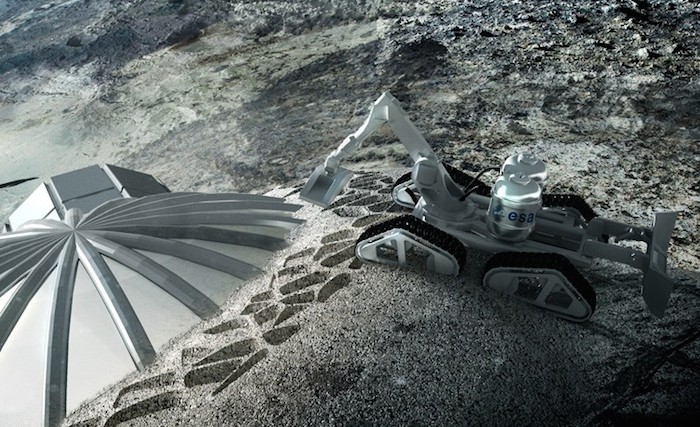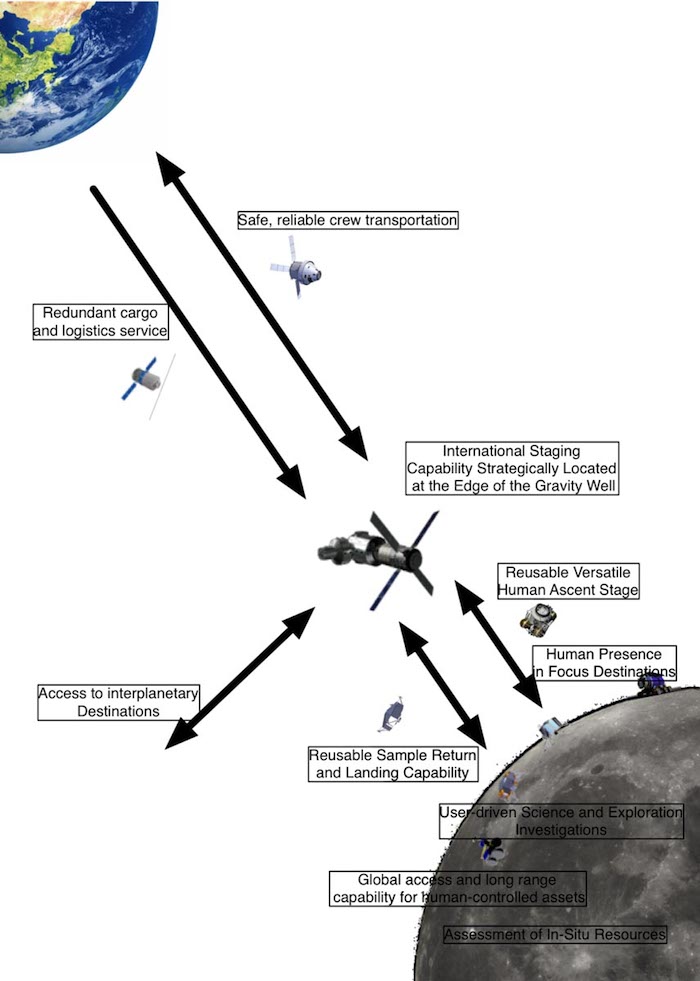.

Villages on the moon, constructed through cooperation between astronauts and robotic systems on the lunar surface, could become a reality as early as 2030. That’s the consensus of a recent international conference of scientists, engineers and industry experts, including Clive Neal, a University of Notre Dame planetary geologist.
The European Space Agency (ESA) hosted a symposium titled “Moon 2020-2030 — A New Era of Coordinated Human and Robotic Exploration,” in the Netherlands. The ESA’s vision is that the moon villages could serve as a potential springboard for future human missions to Mars and potentially other destinations.
In order for that vision to become a reality, Neal said, scientists must first determine if the resources on the Moon are as significant as we think they are.
“We keep talking about lunar resources, but we still need to demonstrate they can be used … (that) they are, in fact, reserves,” he said. “So ground truth verification of deposit size, composition, form and homogeneity requires a coordinated prospecting program as a first step. The next step would demonstrate extraction techniques followed by refinement of the product into usable commodity. A successful program would then clearly demonstrate that lunar resources can enable solar system exploration."
Neal said the ESA meeting highlighted technology development in terms of precision landing, robotic sample return, and cryogenic sampling, caching, return and curation.
“Significant investments in the latter are required and starting to be made,” he said.
Neal’s research explores the origin and evolution of the moon, focusing on the petrology and geochemistry of returned samples coupled with geophysics and other remotely sensed datasets; geophysical instrumentation and investigations of the moon; formation of impact melts; and more basalt petrogenesis. Passionate about the U.S. human spaceflight program and returning humans to the moon to stay, Neal has been involved in numerous NASA review panels and in the study of the moon since 1986. Most recently, he chaired the senior review panel for the Planetary Science Division for extended space missions and is currently in his second term as chair of the Lunar Exploration Analysis Group.
Quelle: University Notre Dame
.
The ESA space exploration strategy and the ISECG Global Exploration Roadmap underline the strategic significance of the Moon in a global space exploration endeavour. The international vision for lunar exploration calls for a new era of coordinated human and robotic missions enabled by broad international cooperation. The ISS programme has demonstrated the importance of a robust international partnership for ISS development, assembly, operations and effective utilisation. Now is the time to build on this partnership and open it to new partners to continue the journey beyond low Earth orbit. The symposium "Moon 2020-2030" 15-16 Dec 2015 will be a key step in advancing the international approach for lunar exploration together with key players from agencies, academia, and industry. I personally look forward to the innovative ideas and mission that will be discussed and the feedback from the stakeholders.
Thomas Reiter
ESA Director of Human Spaceflight and Operations

Next stop: the Moon
The decade 2020-2030 will see a renewed and sustained international effort to explore Earth's only natural satellite.
The ESA exploration strategy considers the Moon as the next destination for humans venturing beyond Low Earth Orbit and an integral element of the roadmap towards humans missions to Mars.
This will be a shared journey. New and bold ambitions for lunar exploration call for a new era of coordinated human and robotic missions. Humans and robots are set to explore the Moon together. The ISECG Global Exploration Roadmap underlines the strategic significance of the Moon in a global space exploration endeavour, calling for a shared international vision on how to bestaccomplish common lunar exploration goals.
The International Space Station programme has demonstrated the importance of a robust international partnership for ISS development, assembly, operations and effective utilisation. Now is the time to build on this partnership and open it to new partners to continue the journey beyond low Earth orbit.
The symposium "Moon 2020-2030" will be a key step in advancing the international approach for lunar exploration together with key players from agencies, academia, and industry.
Join us on this exciting voyage.
Vision 2030
The purpose of the symposium is to consolidate an international vision for lunar exploration by 2030, and discuss approaches and innovative ideas for realising this vision.
Key to realizing the Lunar Exploration Vision 2030 is the step-wise deployment of an international exploration architecture. This vision envisages access for robots and humans to previously unexplored regions.
To enable this vision a change of paradigm is required:
From separate planning of automated and human missions to fully integrated mission planning;
From nationally and private sector driven missions to a truly multilateral effort, including both institutional and private sector partners;
From single missions to an open architecture, enabling repeated missions of increasing complexity.
The challenge
From automated missions to human-robotic cooperation strategies.
From national and bilateral to multilateral cooperation.
From missions to architectures.
From government-driven to common goals of public and private sector.
From PI-driven to open science opportunities.
Symposium objectives
The symposium "Moon 2020-2030" challenges the space agency, academic and industrial communities to engage in a new era of coordinated human and robotic exploration in the interest of science and human expansion.
ESA encourages contributed presentations and open discussions about the future of lunar exploration and invites contributions on the following topics:
Contributions of planned missions and capabilities.
Innovative capabilities for lunar exploration.
Innovative mission concepts.
Recommended focus areas for near-term technology investments and preparatory activities.
Knowledge gaps and related scientific research.
Fundamental scientific research.
Operational aspects, including human roles.
Opportunities and recommended actions to enhance relevance of lunar exploration to society.
Outline
This symposium will feature technical sessions addressing the strategies and challenges of human robotic cooperation on the Moon.
Keynote presentations and several sessions will discuss concrete mission scenarios, whereas open round tables will provide opportunity for exchange of ideas.
A guided visit to the ESA Telerobotics & Haptics Laboratory will allow insight into ongoing research in human-robotic interaction.
Quelle: ESA
3892 Views
